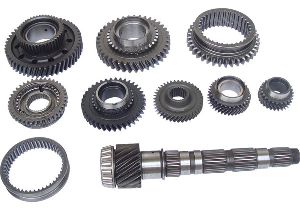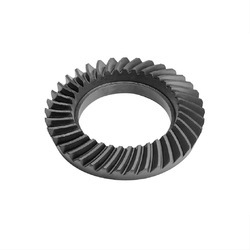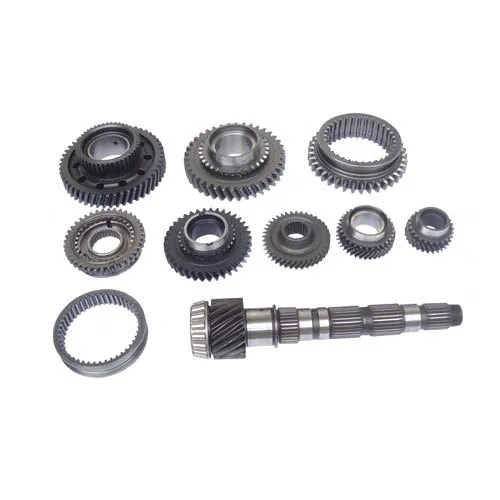Product Description
Product Description
Zerol spiral gear features:
1) Max. OD2
Note: For special order, please write and provide drawing sample
http://baoxincz
Detailed Photos
Our Advantages
Customer Visiting
Certifications
Packaging & Shipping
About Us
As a company of industries and trading integration with ISO 9001-2008 Certificate, HangZhou CHINAMFG Metallurgy Equipment Manufacturing Co., Ltd. Has been in manufacturing material handling equipment parts for many years, with professional experience.
Our Service:
If you are interested in any of our products, please contact me freely! Warmly Welcomed your visit to our factory in China, OEM service will be ok.
FAQ
FAQ:
Q: What information should I provide if I want to order the products?
1) Product information: Quantity, specification
2) Delivery time required.
3) Shipping information: Company name, address, phone number, destination seaport/air port.
4) Forwarder’s contact details if there is any in China.
Q: How about your payment terms?
A: 30% -50%deposit, with the balance before delivery, we accept T/T and L/C at sight.
Q: Can I use our own logo?
A: Yes, we can produce by using your own logo if you need.
Q: How about sample & MOQ policy?
A: Welcome sample order. MOQ can be 1 set.
Q: What is your lead time for your goods?
A: Normally 30 days after confirmed order,
| Application: | Motor, Electric Cars, Machinery, Marine, Agricultural Machinery |
|---|---|
| Hardness: | Hardened Tooth Surface |
| Gear Position: | External Gear |
| Manufacturing Method: | Cut Gear |
| Toothed Portion Shape: | Bevel Wheel |
| Material: | 42CrMo |
| Customization: |
Available
| Customized Request |
|---|

What are the advantages and disadvantages of automatic and manual transmissions?
Automatic and manual transmissions each have their own set of advantages and disadvantages. Here’s a detailed explanation:
Automatic Transmissions:
Advantages:
- Ease of Use: Automatic transmissions are easier to operate since they do not require the driver to manually engage gears. This makes them more convenient, especially in heavy traffic or during long commutes.
- Smooth Shifting: Automatic transmissions provide smooth and seamless gear shifts, as the shifting process is controlled by the vehicle’s computer system. This results in a comfortable driving experience.
- Improved Fuel Efficiency: Modern automatic transmissions often feature advanced technologies such as continuously variable transmissions (CVT) or dual-clutch transmissions (DCT), which can optimize fuel efficiency by selecting the most appropriate gear ratio for the driving conditions.
- Reduced Driver Fatigue: With automatic transmissions, drivers can focus more on the road and other aspects of driving, as they don’t need to manually shift gears. This can reduce driver fatigue, especially during long journeys.
Disadvantages:
- Higher Cost: Automatic transmissions tend to be more expensive to manufacture and repair compared to manual transmissions, which can result in higher vehicle purchase prices and maintenance costs.
- Less Control: Some driving enthusiasts prefer manual transmissions because they offer more control over gear selection, allowing for a more engaging driving experience. Automatic transmissions, on the other hand, limit the driver’s ability to choose specific gear ratios.
- Lower Power Transfer Efficiency: Automatic transmissions can have slightly lower power transfer efficiency compared to manual transmissions, which means that some engine power is lost during the transmission of power from the engine to the wheels.
Manual Transmissions:
Advantages:
- Greater Control: Manual transmissions provide the driver with full control over gear selection, allowing for precise shifts and the ability to match engine RPM to driving conditions. This control can enhance the driving experience, especially for those who enjoy a more engaged and sporty driving style.
- Improved Power Transfer Efficiency: Manual transmissions generally have higher power transfer efficiency compared to automatic transmissions. This means that a greater percentage of engine power reaches the wheels, resulting in better acceleration and responsiveness.
- Lower Maintenance Costs: Manual transmissions are typically less complex and have fewer components compared to automatic transmissions. Consequently, they often require less maintenance and can be more cost-effective to repair.
Disadvantages:
- Requires Skill: Operating a manual transmission requires learning how to engage gears, coordinate clutch and throttle control, and shift smoothly. This can be challenging for drivers who are not accustomed to manual transmissions or prefer a more relaxed driving experience.
- Increased Physical Effort: Maneuvering a clutch pedal in stop-and-go traffic or during long drives can be physically tiring, especially in situations that require frequent gear changes.
- Steeper Learning Curve: Learning to drive a manual transmission vehicle effectively takes time and practice. It requires developing a feel for the clutch engagement point and mastering the coordination between the clutch, gear lever, and accelerator pedal.
Ultimately, the choice between automatic and manual transmissions depends on personal preference, driving conditions, and driving style. Automatic transmissions offer convenience and ease of use, while manual transmissions provide greater control and a more engaging driving experience.

What is the purpose of a differential gear in an automobile?
A differential gear in an automobile serves several important purposes. Here’s a detailed explanation:
1. Differential Action:
The primary purpose of a differential gear is to allow the wheels of an automobile to rotate at different speeds while receiving power from the engine. This is necessary when the vehicle is taking a turn, as the wheels on the outer side of the turn need to cover a greater distance and rotate faster than the wheels on the inner side.
2. Smooth Cornering:
By enabling the wheels to rotate at different speeds during a turn, the differential allows for smooth and controlled cornering. It prevents the tires from scrubbing and dragging along the road surface, which could lead to excessive tire wear and poor handling. Instead, the differential ensures that each wheel can rotate freely at the appropriate speed, maintaining traction and stability.
3. Power Distribution:
The differential also plays a crucial role in distributing power from the engine to the wheels. In a rear-wheel-drive vehicle, the differential is located on the rear axle, and it splits the engine torque between the two rear wheels. In a front-wheel-drive vehicle, the differential is integrated into the transaxle, transferring power to the front wheels.
4. Traction Enhancement:
Another function of the differential is to improve traction. When one wheel encounters a low-traction surface, such as ice or gravel, the differential allows power to be redirected to the wheel with better grip. This helps maintain traction and prevents wheel spin, allowing the vehicle to move forward more effectively in challenging driving conditions.
5. Compensation for Uneven Surfaces:
When driving on uneven surfaces, such as rough terrain or potholes, each wheel may experience different levels of vertical movement. The differential gear compensates for these variations in wheel movement, allowing the wheels to maintain contact with the ground and providing a smoother ride.
6. Reduction of Stress and Wear:
The differential helps reduce stress and wear on drivetrain components. By allowing the wheels to rotate at different speeds, it helps distribute the load evenly across the drivetrain, minimizing strain on components such as axles, driveshafts, and gears.
In summary, the differential gear in an automobile enables smooth cornering, power distribution, traction enhancement, compensation for uneven surfaces, and reduction of stress and wear on drivetrain components. It plays a vital role in ensuring optimal performance, handling, and stability of the vehicle.

Can you explain the role of gear ratios in an automobile transmission?
Gear ratios play a crucial role in an automobile transmission. Here’s a detailed explanation:
In an automobile transmission, the gear ratio refers to the ratio of the rotational speed of the engine’s input shaft to the rotational speed of the transmission output shaft, which is connected to the wheels. Different gear ratios are achieved by using gears of varying sizes.
1. Speed and Torque Conversion: The primary function of gear ratios is to convert the engine’s high rotational speed and low torque into lower rotational speed and higher torque at the wheels. Lower gear ratios (such as first or second gear) provide high torque multiplication, which is useful for starting the vehicle or climbing steep hills. Higher gear ratios (such as fifth or sixth gear) allow the engine to operate at lower speeds while maintaining higher vehicle speeds, providing better fuel efficiency and reduced engine wear.
2. Acceleration and Power: By selecting the appropriate gear ratio, the transmission enables the driver to control the vehicle’s acceleration and power delivery. Lower gear ratios provide quick acceleration by multiplying the engine’s torque output. During rapid acceleration, the transmission may stay in lower gears to keep the engine operating within its optimal power band. Higher gear ratios are used for cruising at higher speeds, where less torque is needed to maintain the vehicle’s momentum.
3. Engine Performance: Gear ratios are crucial for optimizing engine performance. Engines have a specific range of speeds called the power band, where they deliver the most power efficiently. By selecting the right gear ratio, the transmission keeps the engine operating within its power band, ensuring optimal performance and responsiveness. This improves the overall driving experience and allows the engine to operate at its most efficient point, resulting in better fuel economy.
4. Load and Terrain Adaptation: Different gear ratios allow the vehicle to adapt to varying loads and terrains. When encountering uphill gradients or carrying heavy loads, lower gear ratios are used to provide the necessary torque for overcoming resistance. Conversely, on flat roads or when the vehicle is lightly loaded, higher gear ratios are utilized to maintain speed while reducing engine RPM and improving fuel efficiency.
5. Gear Shifting: The availability of different gear ratios facilitates gear shifting in manual transmissions. As the vehicle accelerates, the driver can shift to higher gears to reach higher speeds while maintaining optimal engine performance. Similarly, when decelerating or coming to a stop, downshifting to lower gears allows for engine braking and better control of the vehicle.
6. Mechanical Advantage: Gear ratios provide a mechanical advantage by multiplying the engine’s torque output. Lower gear ratios offer higher torque multiplication, enabling the vehicle to overcome resistance and handle demanding tasks. This mechanical advantage is particularly useful during towing, off-road driving, or situations requiring increased traction.
Overall, gear ratios in automobile transmissions enable the engine’s power and torque to be transmitted to the wheels efficiently. They allow for speed and torque conversion, adaptation to different driving conditions, optimization of engine performance, and control over the vehicle’s acceleration and power delivery.


editor by CX 2023-09-23